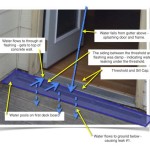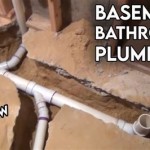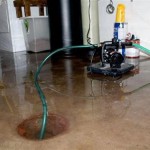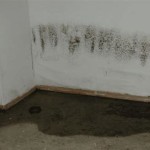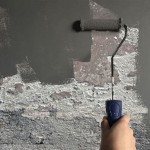How To Get Rid Of Musty Smell In Basement Carpet
A musty smell in a basement carpet is a common problem, often stemming from moisture buildup. Basements, by their nature, are prone to dampness due to their underground location. This creates an ideal environment for mold and mildew to thrive, generating the unpleasant odor that homeowners frequently encounter. Effectively addressing this issue requires a multifaceted approach that focuses on identifying the source of the moisture, eliminating it, and then thoroughly cleaning and deodorizing the carpet.
The musty smell is not merely an aesthetic issue. It often indicates the presence of mold spores, which can trigger allergic reactions and respiratory problems in susceptible individuals. Prolonged exposure to mold can exacerbate asthma and other respiratory conditions. Therefore, prompt and effective action is necessary to safeguard the health and well-being of the inhabitants of the home.
Addressing the musty smell in a basement carpet is a process that demands patience and attention to detail. It is important to remember that simply masking the odor with air fresheners or scented products is not a solution. This only provides temporary relief and does not address the underlying cause of the problem. The key to permanently eliminating the musty smell is to identify and eliminate the source of the moisture, followed by a thorough cleaning and deodorization of the carpet and the surrounding area.
Identifying and Eliminating the Source of Moisture
The first and most crucial step in eliminating the musty smell is to identify the source of moisture. Without addressing the root cause, any cleaning efforts will only be temporary. Common sources of moisture in basements include:
Leaking Pipes: Carefully inspect all exposed pipes and fittings for leaks. Even small drips can contribute to significant moisture buildup over time. Look for signs of corrosion, discoloration, or water stains around pipe joints.
Foundation Cracks: Check the foundation walls, both inside and outside, for cracks. Even hairline cracks can allow moisture to seep into the basement. Seal any cracks with appropriate sealant or hydraulic cement. If the cracks are significant, it may be necessary to consult with a foundation repair specialist.
Poor Ventilation: Basements often lack adequate ventilation, which can trap moisture and humidity. Ensure proper ventilation by opening windows or using a dehumidifier to reduce moisture levels. Consider installing exhaust fans in bathrooms or laundry rooms located in the basement.
Groundwater Seepage: In areas with high water tables, groundwater can seep through the basement floor and walls. This may require more extensive solutions, such as installing a sump pump or a French drain to divert water away from the foundation.
Flooding: Past flooding events can saturate the carpet and subfloor, leading to persistent musty smells. If the basement has flooded, it is essential to thoroughly dry and clean the area to prevent mold growth.
Condensation: Condensation can form on cold surfaces, such as concrete walls and pipes, especially during periods of high humidity. Insulating these surfaces can help prevent condensation. Using a dehumidifier to lower the humidity level will also help.
Once the source of moisture is identified, it is crucial to take immediate action to eliminate it. This may involve repairing leaks, sealing cracks, improving ventilation, or implementing more comprehensive waterproofing solutions. Addressing the moisture source is the foundation for successfully removing the musty smell and preventing its recurrence.
Cleaning and Deodorizing the Basement Carpet
After the source of moisture has been addressed, the next step is to thoroughly clean and deodorize the basement carpet. This requires a systematic approach that involves removing surface dirt, killing mold and mildew spores, and neutralizing odors. Here are several effective methods for cleaning and deodorizing basement carpet:
Vacuuming: Begin by thoroughly vacuuming the carpet to remove loose dirt, dust, and debris. Use a vacuum cleaner with a HEPA filter to trap allergens and mold spores. Pay particular attention to areas that are known to be damp or have a visible mold or mildew growth.
Baking Soda Treatment: Baking soda is a natural deodorizer that can effectively absorb odors and moisture. Sprinkle a generous amount of baking soda over the carpet, focusing on areas with a strong musty smell. Allow the baking soda to sit on the carpet for several hours, or preferably overnight, to absorb odors. Then, thoroughly vacuum the carpet to remove the baking soda.
Vinegar Solution: White vinegar is an effective disinfectant and deodorizer that can kill mold and mildew spores. Mix equal parts white vinegar and water in a spray bottle. Lightly spray the carpet with the vinegar solution, ensuring that it does not become overly saturated. Allow the vinegar solution to sit on the carpet for a few hours. The vinegar smell will dissipate as it dries. For carpets with significant mold or mildew growth, a stronger vinegar solution may be necessary.
Commercial Carpet Cleaners: Several commercial carpet cleaners are specifically formulated to remove mold, mildew, and odors. When using a commercial carpet cleaner, carefully follow the manufacturer's instructions. Test the cleaner on a small, inconspicuous area of the carpet first to ensure that it does not cause discoloration or damage. Use a carpet cleaning machine or a spray bottle to apply the cleaner to the carpet, and then thoroughly extract the cleaner with a wet/dry vacuum.
Steam Cleaning: Steam cleaning can effectively kill mold and mildew spores and remove deep-seated dirt and stains. Use a steam cleaner with a carpet cleaning attachment and follow the manufacturer's instructions. Be sure to allow the carpet to dry completely after steam cleaning to prevent the recurrence of mold growth.
Professional Carpet Cleaning: For heavily soiled or mold-infested carpets, it may be necessary to hire a professional carpet cleaning service. Professional carpet cleaners have the equipment and expertise to thoroughly clean and deodorize carpets, removing stubborn stains and odors. They can also apply antimicrobial treatments to prevent future mold growth.
After cleaning the carpet, it is essential to allow it to dry completely. Use fans or a dehumidifier to speed up the drying process. Ensure that the area is well-ventilated to prevent moisture buildup. Once the carpet is dry, vacuum it again to remove any remaining residue.
Preventative Measures and Ongoing Maintenance
Once the musty smell has been eliminated from the basement carpet, it is crucial to implement preventative measures to prevent its recurrence. This involves maintaining a dry and well-ventilated basement, regularly cleaning the carpet, and promptly addressing any potential sources of moisture.
Dehumidification: Using a dehumidifier regularly can help maintain a low humidity level in the basement, preventing the growth of mold and mildew. Choose a dehumidifier with a capacity that is appropriate for the size of the basement. Regularly empty the dehumidifier's water reservoir to prevent overflow.
Ventilation: Ensure that the basement is well-ventilated by opening windows or using exhaust fans. This will help to remove moisture and humidity from the air. Consider installing a whole-house ventilation system to improve air circulation throughout the home.
Regular Cleaning: Vacuum the basement carpet regularly to remove dirt, dust, and debris. Address spills and stains promptly to prevent them from becoming permanent. Consider having the carpet professionally cleaned at least once a year.
Moisture Monitoring: Regularly inspect the basement for signs of moisture, such as water stains, condensation, or damp spots. Address any potential sources of moisture immediately, such as leaking pipes or foundation cracks. Consider using a moisture meter to monitor the moisture content of the basement floor and walls.
Carpet Padding: Consider using a moisture-resistant carpet padding to prevent water from seeping into the subfloor. This will help to protect the subfloor from mold and mildew growth. Replace the carpet padding if it becomes wet or damaged.
Area Rugs: Using area rugs can help protect the carpet from spills and stains. Choose area rugs that are made of moisture-resistant materials. Regularly clean and vacuum area rugs to prevent the buildup of dirt and debris.
By implementing these preventative measures and maintaining a consistent cleaning routine, homeowners can effectively prevent the recurrence of musty smells and maintain a healthy and comfortable basement environment. Addressing the root causes of moisture and maintaining a proactive approach to cleaning and ventilation are key to long-term success.

How To Get Moldy Smell Out Of Carpet In 8 Simple Steps

How To Get Rid Of Musty Smells In Cabins Basements And More 11 Simple Ways This Diy Life

How To Get Rid Of Musty Smell In Basement Keep Away

How To Get Rid Of Basement Odor And Why It Smells In The First Place

How To Get Rid Of The Musty Smell In Your Basement Hausette

Musty Smells In The House Finding Them And Getting Rid Of

How To Get Rid Of Basement Odor And Why It Smells In The First Place

Musty Mildew Smell Remover For Home And Basement Odor Eliminator Odors

How To Get Rid Of Basement Odor And Why It Smells In The First Place

How To Get The Wet Smell Out Of Flooded Carpet Cleaning Tips Youtube
Related Posts

